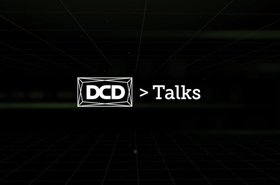The reality of our climate situation is that a complex and multi-faceted approach is necessary. We need to rethink the way we function as a society – and that shift is not one that will come easily. Instead, it will come from individual decisions, moves to more sustainable approaches as industries and as individuals.
In our recent Towards Net Zero broadcast, we discussed those moves available to us. Janne Paananen, technology manager at Eaton, talked about the power management company’s work with grid-interactive UPSs.
“To meet sustainability goals on the country level, and as individuals and organizations, we are changing the traditional grid and electricity system to pay more based on distributed renewable resources, and this will create both some challenges and opportunities.
“Whenever I'm describing the challenges relating to the future grid, it is highly based on distributed renewable assets. One of the problems is that wind and solar renewable energy have a variable nature. It's not a steady supply, like that from the traditional fossil-based power plants or nuclear and hydro. Therefore, you need to have more flexibility in the system to adapt to the capacity that you're going to have with that source of energy in the system, and you will possibly need to store it.”
The question is how can we make that system more flexible, without wasting resources?
“Maybe the biggest idea behind this is that instead of building more, and creating a burden for the environment through sourcing raw materials, and manufacturing materials;or the new systems and rules, we should be focusing on seeing how we can leverage the existing assets in the system, in the commerce of buildings, in data centers, in the electrical vehicle, and in charging infrastructure, as well.
“So, how to leverage all of these assets in a smarter way? Of course, one way of doing it is to make the assets themselves smarter, so that they can have this bi-directional relation with the grid, so that they can react to the needs of the grid and help to balance the system, providing flexibility to help use more renewables.”
Ciarán Forde, segment leader for data centers and ICT at Eaton also pointed out that, while there is a sustainability issue to bear in mind, some of it is actually a PR problem.
“It's fair to say that the data center specialists would have one view, but the person in the street may have another and we find ourselves in an unusual situation for the data center industry and the powerhouse of the digital economy. The sector that guided us very well through the pandemic period, can also be misinterpreted as being very power-hungry.
“That seemed to challenge the overall move towards a renewable energy system, given their large sometimes insatiable appetite for power. In many ways, the data center is sometimes seen as the very problem to that transition. What Janne outlined was how a data center in itself can be part of the solution, and an accelerant to the adoption of renewable energy if we adopt certain technologies and if we have a change in approach in how we design, build and operate those data centers.
“We took a look at the overall consumption of data centers, and in the overall environment we’re very efficient, I would argue the most efficient electrical environment we have and take up to one to two percent of the world's electricity. But when you combine the data center with the telecom sector and our overall digital appetite, some estimates point to that growing to 20 percent by 2030.
“So certainly, we have a significant energy challenge, and all coming at a time when we not only want to grow, but we want to convert to renewable energy.”
Sustainability is a challenge, but it is by no means a challenge the data center industry isn’t up to. Former President of the United States, Theodore Roosevelt, once said, “Nothing in the world is worth having or worth doing unless it means effort, pain, difficulty.” A philosophy that is perhaps worth recalling.
Tune in for the full episode to hear more on the topic from the panel of speakers



